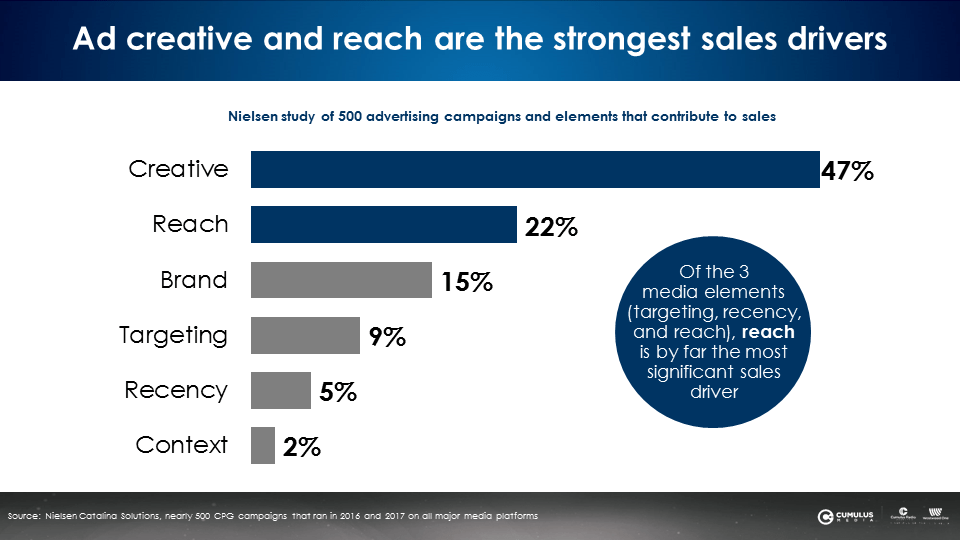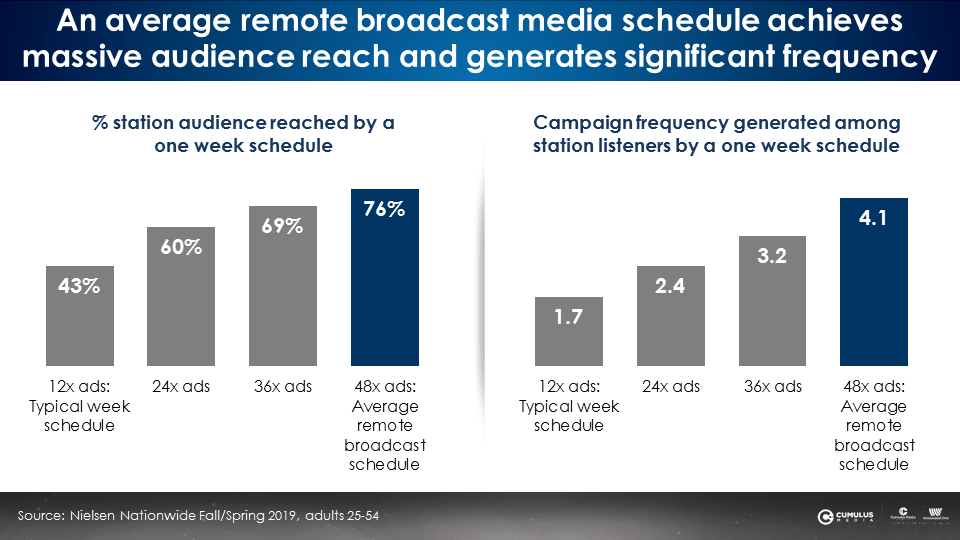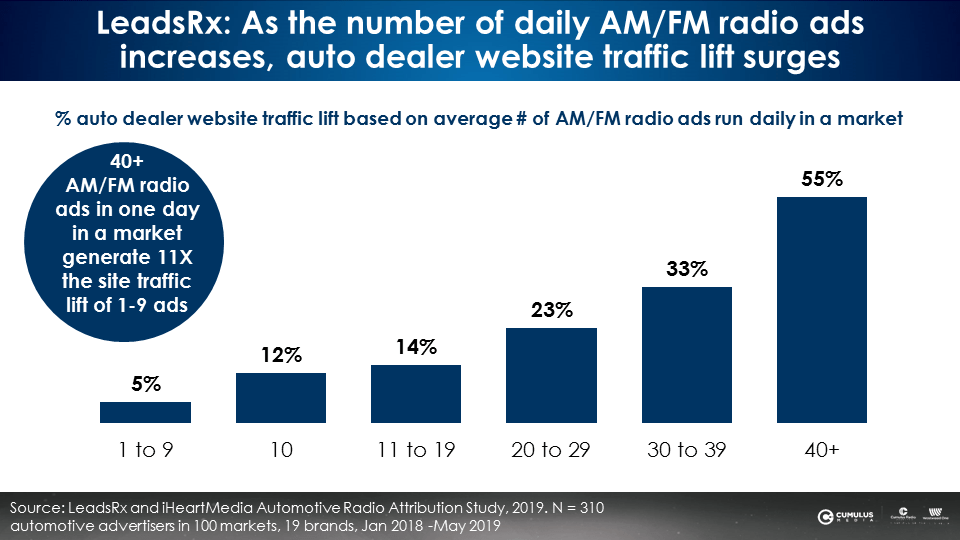The Virtual Remote: How AM/FM Radio Stations Can Use Media And Creative Messaging To Connect Consumers With Advertisers
Before the pandemic, remote broadcasts, appearances, and events were staples of the AM/FM radio industry. These promotions took place in a variety of locations – auto dealers, stores, and shopping centers. Station personalities and street teams would be onsite to interact with listeners, hand out prizes, and drive consumer retail traffic.
Due to social distancing measures and shelter-in-place mandates nationwide, station remotes have been paused for the safety of AM/FM radio personnel and their listeners. But is there anything comparable to an in-person remote?
There is, but you’d have to look beyond the spinning of a prize wheel. The AM/FM radio industry has ventured into the world of virtual events, “from happy hours and artist performances and “concerts,” to virtual appearances at client locations, to full-on convention-type showcase events.”
Why are AM/FM radio sales promotions so powerful? Creative and reach

In an analysis of 500 ROI studies, Nielsen found that the two strongest sales drivers are creative and reach. The best creative hits the connection point between the message, the media, and the tools. According to best practices, when these three components work together, creative is most effective.
For stations running a virtual remote, the excitement of a limited time special offer, amazing deals, and high energy deliver results. The message, the media, and the tools can be utilized together to make an impact. While in-person remotes can rely on the onsite excitement of call-ins, virtual remotes need to develop that atmosphere. For example:
- The message: On-air talent should bring emotion and energy to promos to mimic onsite experiences.
- The media: Align to the consumer purchase mindset by knowing key buying windows or times when consumers might be in their cars.
- The tools: Use music or a sonic logo to add interest and capture attention.
Creative, however, cannot stand alone. According to Nielsen, of the 3 media elements of targeting, recency, and reach, reach is by far the most significant media sales driver.
The media plan for a station event is the engine of impact
To maximize the impact of reach, a major aspect of a remote broadcast is the media plan supporting the event. These schedules include the on-air ads, promos, and live reports from the promotion that run in the week leading up to, the day of, and during the event.
An example weekly sales promotion campaign has twenty ads, twenty promos, and eight live reports. They promote the station’s presence at the store, give listeners the important details, and, most importantly for advertisers, give consumers the necessary call to action.
“Visit this Saturday for our grand opening sales!” “Stop by this weekend for the lowest prices this season!” “Come on down and test out our new model year vehicles now!”
The media plan: Average remote broadcast schedules have massive audience reach and generate significant frequency
According to Nielsen, a typical AM/FM radio buy of twelve weekly commercials reaches 43% of a station’s 25-54 audience an average of 1.7 times. Twenty-four ads per week reaches 60% of the station audience an average of 2.4 times.

The average remote broadcast schedule includes significantly more ads, promos, and live reports – forty-eight announcements in all. This aggressive event promotion media plan generates a massive reach of 76% of a station’s audience with exposure to the campaign an average of 4.1 times.
Create a virtual remote using a strategic media schedule and messaging
It could be a while before in-person remotes can happen again but there is no reason why advertisers can’t still take advantage of what value they bring to the table.
For example, a store can still promote exclusive day-of deals through a virtual remote supported by a 48+ spot buy in the week leading up to it. AM/FM radio ads can drive consumers to a website to chat with customer service representatives. DJs can get on the air and talk about the sale being promoted.
To drive significant web traffic: 20 or more daily ads is the sweet spot
One to nine ads per day in a market causes a 5% increase in website traffic. Ten ads per day generates twice as much website traffic, 12%. Twenty to twenty-nine ads per day causes a 23% lift in website traffic. Forty or more ads per day creates a massive 55% increase in website traffic.
These are numbers of ads per day overall in the market. The forty ads per day could be spread out over a number of radio stations in a cluster. For example, a five-station cluster each running eight ads a day would generate the forty daily ads to generate the 55% increase in website traffic.

With a hefty amount of airtime and creative that is enticing and includes a clear call to action for limited time offers, consumers can still feel all the excitement and sense of urgency of a typical remote.
Key takeaways:
- The engine of impact for broadcast promotions is the media schedule.
- A typical event campaign consisting of 48 weekly announcements (ads, promos, live reports) reaches a massive 76% of the typical station’s audience an average of 4.1 times.
- A Nielsen analysis of 500 ROI studies found the two biggest sales drivers are creative and reach. Radio sales promotions work due to compelling creative and mass reach schedules with lots of announcements.
- LeadsRx, the leading attribution measurement company, found that auto dealer website visitors spiked up dramatically as the number of daily radio ads run in the market increased. 40 ads a day drove eleven times more website traffic than 1-9 ads a day.
- A virtual radio sales event with a strong media campaign along with an exciting offer can generate comparable results to an in-person remote broadcast.
Pierre Bouvard is Chief Insights Officer at CUMULUS MEDIA | Westwood One.
Contact the Insights team at CorpMarketing@westwoodone.com.